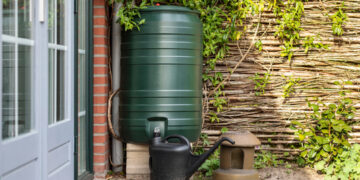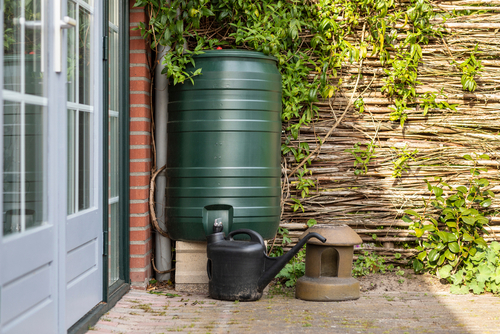Respect the Source
Water is one of our most precious—and overlooked—resources. It flows from our taps with the twist of a handle, but the journey it takes to get there is anything but simple. It’s pumped, treated, and transported across cities and landscapes, consuming energy and infrastructure every step of the way.
But here’s the thing: fresh water is finite. Climate change, population growth, and droughts are putting real pressure on global water supplies. And while it’s easy to feel distant from these big issues, the reality is that they start at home. The way we use water in our daily lives—our showers, dishes, laundry, gardens—shapes our collective footprint.
We don’t need to wait for a crisis to start conserving. In fact, the earlier we begin, the better off we—and the planet—will be. Whether you live in a dry climate or a rainy one, water conservation is an act of respect, resilience, and responsibility.
[Ad Banner #1]
Placeholder for the first advertisement.
What’s Hiding in Your Water Bill?
The average household in the U.S. uses around 300 gallons of water per day. That includes everything from flushing toilets to watering lawns. Nearly 30% of that use happens outdoors, while toilets, showers, faucets, and laundry make up the rest. The good news? Much of this water use can be trimmed without impacting comfort or routine—just by making smarter choices and upgrading inefficient systems.
Conservation doesn’t mean going without—it means being intentional. When you reduce waste, you lower your utility bills, ease the strain on municipal systems, and help preserve local water supplies. It’s a win all around.
Rainwater Harvesting: A Practical, Low-Tech Solution
Rainwater harvesting is one of the simplest, most effective water-saving strategies you can implement at home. It doesn’t require fancy systems or massive investment—just a willingness to collect what nature already gives us for free.
How it works:
-
Install a rain barrel at the base of a downspout to catch water from your roof.
-
Add a screen to filter leaves and debris.
-
Use a spigot or hose attachment to water plants or rinse outdoor surfaces.
Even a modest system can collect hundreds of gallons in a single season. It’s ideal for:
-
Watering your garden or potted plants
-
Washing outdoor furniture
-
Refilling birdbaths or wildlife dishes
-
Cleaning tools or bikes
In some regions, harvested rainwater can even be filtered for indoor use—check your local guidelines. Either way, using rainwater reduces your dependence on treated municipal water and helps manage stormwater runoff at the same time.
Low-Flow Fixtures: Small Upgrades, Big Results
You don’t need to tear out your plumbing to make a big difference. Replacing outdated fixtures with low-flow alternatives is one of the easiest, most affordable ways to reduce water use across your home.
Start with these basics:
-
Low-flow showerheads: Standard models use up to 2.5 gallons per minute; low-flow models use as little as 1.5, without sacrificing pressure.
-
Faucet aerators: These tiny attachments cost just a few dollars and can cut faucet water use in half.
-
High-efficiency toilets: Modern toilets use 1.28 gallons or less per flush (compared to older models using 3-7 gallons). Dual-flush models offer even more flexibility.
These upgrades often pay for themselves quickly in lower water bills—and many cities offer rebates to make them even more affordable.
[Ad Banner #2]
Placeholder for the second advertisement.
Water-Wise Habits That Stick
Hardware changes are important, but so are the habits we practice every day. Conscious water use becomes second nature once you start paying attention. Here are a few small shifts with lasting impact:
-
Time your showers. Set a timer or play a 5-minute song to stay aware. Even shaving off one minute saves hundreds of gallons a month.
-
Turn off the tap while brushing or scrubbing. Simple, old-school advice that still holds strong.
-
Run full loads. Dishwashers and washing machines are most efficient when full—less water per item, less energy overall.
-
Reuse where possible. Leftover water from boiling pasta or rinsing veggies can be cooled and used for plants.
-
Use a broom, not a hose. Sweeping patios and driveways saves gallons with each use.
These habits cost nothing to adopt but pay off in long-term resource savings.
Outdoor Use: Xeriscaping, Drip Irrigation, and Smart Timing
Outdoor water use is where many households can make the biggest gains. Lawns, gardens, and landscaping can easily double water bills in dry seasons—but they don’t have to.
-
Xeriscaping: Design your yard with native, drought-tolerant plants that require little to no supplemental watering.
-
Mulch generously: A few inches of mulch around plants helps retain moisture and reduce evaporation.
-
Drip irrigation systems: Targeted, efficient watering right at the root zone—where plants need it most.
-
Water early or late: Avoid watering during the heat of the day, when much of it evaporates before it can soak in.
Even switching to a rain gauge or soil moisture sensor can help prevent overwatering. Your plants will thrive, and your water bill will shrink.
Facing the Barriers
Let’s be honest: making changes takes effort. Some upgrades require money. Habits take time to shift. And not everyone lives in a home where major systems can be installed. But water conservation isn’t all-or-nothing.
If you rent, start with aerators, shower timers, and collecting rain for your patio plants. If you own your home, look into rebates for efficient appliances or rain barrels. If you live in a rainy climate, take advantage of it. If you live in a dry one, your efforts are even more critical.
No matter where you start, what matters is that you do.
Water Wisdom, One Step at a Time
The future of water depends on how we treat it today. It’s easy to feel disconnected from our impact—but when you choose to use less, reuse more, and think before you turn on the tap, you’re actively contributing to a healthier planet.
Start small. Choose one habit to shift, or one upgrade to make this month. Talk to your family. Share what you learn. Teach your kids why it matters. Water connects us all—and conserving it is one of the most powerful, tangible ways to live sustainably.
























